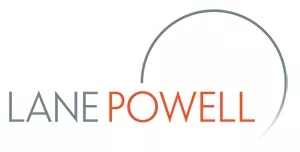The $1.9 trillion American Rescue Plan Act of 2021 (ARP), signed into law on March 11, 2021, includes a $28.6 billion "Restaurant Revitalization Fund" (RRF) administered by the Small Business Administration (SBA). The RRF provides economic relief to eligible restaurants. The RRF is similar to the Paycheck Protection Program (PPP), but RRF amounts are based on lost revenue rather than payroll, and the program is administered directly by the SBA rather than through bank loans guaranteed by the SBA.
RRF Eligibility
The ARP broadly defines eligible entities as "a restaurant, food stand, food truck, food cart, caterer, saloon, inn, tavern, bar, lounge, brewpub, tasting room, taproom, licensed facility or premise of a beverage alcohol producer where the public may taste, sample, or purchase products, and other similar places where the public or patrons assemble for the primary purpose of being served food or drink." The ARP specifically includes any such entities located in an airport, or that are Tribally-owned.
However, the ARP excludes from eligibility:
- Publicly-traded companies.
- An entity (together with any "affiliated business")
that, as of March 31, 2020, owns or operates more than 20
locations, regardless of multiple or different operating names. For
this purpose, an affiliated business is one that as of March 13,
2020 (a) had an equity interest or right to profit distributions of
50 percent or more or (b) had contractual authority to control the
direction of the business. The National Restaurant Association has
told its members via webinars that the phrase "or has
contractual authority to control the direction of the
business" was not intended to preclude franchisees from
receiving RRF grants so long as they have 20 or fewer
locations.
- Companies that have applied for a Shuttered Venue Operator
(SVO) grant. The SVO was enacted as part of the December 2020
stimulus bill and is beyond the scope of this article. Readers can
find details and eligibility of the SVO program on this SBA site. SVO grants generally equal 45 percent of
the eligible applicant's 2019 gross earned revenue, with a $10
million cap. SVO grants thus are less likely than RRF grants, but,
as discussed below, the RRF may run dry, and the SBA may award an
RRF grant of less than the maximum amount allowed. Businesses that
qualify for both need to carefully weigh the benefits and
detriments of applying for each.
- State or local government-operated business.
RRF applicants must make the same uncertainty certification required for a PPP loan: The uncertainty of current economic conditions makes necessary the grant request to support the ongoing operations. As with businesses applying for a PPP loan, we strongly recommend that RRF applicants prepare contemporaneous documentation supporting this representation, similar to what we recommended in connection with PPP loans as discussed here. We also anticipate that the SBA may scrutinize applicants owned by well-heeled owners, again similar to what the SBA did in connection with PPP loans as discussed here.
Amount of RRF Grants
An eligible business may receive a grant equal to the amount of its "pandemic-related revenue loss." An entity's pandemic-related revenue loss generally equals its 2019 gross receipts, less (1) its 2020 gross receipts and (2) the amount of any PPP loan the business received (both first draw and second draw).
Special rules apply to entities not in operation for all of 2019
or that opened between January 1, 2020 and March 11, 2021 (the date
of enactment of the ARP).
- If the business is not in operation for the entirety of 2019,
the total before subtraction for PPP loans is the difference
between 12 times (i) the average monthly gross receipts for 2019
and (ii) the average monthly gross receipts in 2020. Alternatively,
the SBA can create its own formula.
- If the business is not in operation until 2020, it can receive
a grant equal to the amount of "eligible expenses"
subtracted by its gross receipts received. Alternatively, the SBA
can create its own formula.
- If the business is not yet in operation as of the application date, but it has made "eligible expenses," the grant would be made equal to those expenses. Alternatively, the SBA can create its own formula.
The total grant amount for an eligible business
(and any affiliated businesses) is capped at $10
million and is limited to $5 million per physical
location of the business. In addition, the ARP divides the
$28.6 billion allocated to the RRF into two buckets:
- $5 billion is set aside for restaurants with
gross receipts of $500,000 or less during 2019 so that they compete
in a different funding pool than larger restaurants.
- The SBA will award the remaining $23.6 billion "in an equitable manner to eligible entities of different sizes based on annual gross receipts." We currently do not know how the SBA will accomplish this.
Industry representatives believe that demand likely will exceed the $28.6 billion allocated to the RRF. Recognizing this, the ARP requires that, in the initial 21-day period, the SBA must prioritize grants for small business concerns owned and controlled by women, veterans, or socially and economically disadvantaged small business concerns. We will see if Congress replenishes the RRF, or creates a second round RRF, as it did with PPP loans.
Many restaurateurs dedicated countless resources and hours to restructuring their operations to convert to take out or to serve outdoors. Those restaurants able to pivot will discover that they might actually have been better off if they had simply dedicated their efforts to negotiating rent holidays, buying plywood for their windows and putting up signs saying they were closed for 2020. Why? Because every dollar of revenue they earned during 2020 reduces the amount of the grant to which they otherwise would have been entitled. Further, the pivot to remain open often required long hours (and sleepless nights) on behalf of the owner-operators. But the nature of recovery money invariably involves winners and losers. If closed restaurants reopen because of this benefit, we will all benefit, including those inner cities where so many restaurants have encountered unprecedented pain as office workers switched to remote work.1
Use of RRF Grant Proceeds
Businesses receiving an RRF grant must spend the money on payroll costs, as defined for PPP loan purposes; mortgage payments (both principal and interest, but not any prepayment); rent (but not a prepayment); utilities; maintenance (broadly defined); supplies, including protective equipment and cleaning materials; food and beverage expenses within the scope of normal business practice; "covered supplier costs," as defined for PPP loan forgiveness purposes, operational expenses, paid sick leave; and any other expenses allowed by the SBA. These allowed uses are similar to, but not identical with, expenses that result in PPP loan forgiveness. As noted above, businesses may use RRF grants for payroll costs, as defined for PPP purposes. However, the ARP references the statutory definition of payroll costs for PPP loan purposes. Thus, it is likely that the RRF will incorporate the SBA-created special limitations on cash compensation for owners, discussed in this article.
A business must use the RRF grant on the above-listed allowed expenses during the "covered period." For this purpose, the covered period began on February 15, 2020. The covered period ends on either December 31, 2021, or another date on or before March 11, 2023 (2 years after enactment of the ARP) selected by the SBA. The ARP specifically requires that a business that fails to use all grant proceeds or permanently ceases operations must repay any amounts not spent on allowed uses. In this regard, an RRF grant is less favorable than a PPP loan. A PPP loan recipient that does not spend all PPP proceeds on forgivable uses must repay the amount over the two-year or five-year term of the PPP loan. An RRF grant recipient, on the other hand, must return the amount, with no guidance on how quickly the RRF grant recipient must return the amount. As a practical matter, we suspect that RRF recipients will not have any problem using all proceeds for the prescribed purposes, even if it means filling the basement with wine and liquor for sale following the close of the covered period.
The ARP does not contain a rule preventing an RRF grant recipient from obtaining second draw PPP loan forgiveness from forgivable expenses that also are allowed RRP grant uses. Notwithstanding the lack of any statutory prohibition on such "double-dipping," the SBA could create such a rule, much the way they did in investing non-statutory limitations in the PPP context - as discussed here and here.
Timing
We expect this priority window to open sometime in May, which means that most restaurants might not be able to apply until June. However, several congressional representatives are projecting a far more rapid roll-out as discussed here.
Federal Tax Impact
Similar to PPPs (as revised by the late December 2020 stimulus legislation), grants are tax-free to the recipient and do not reduce tax deductions for expenses paid with grant proceeds. If you have not followed the tax debate surrounding PPPs, see this article. Similar to PPP forgiveness, it is unclear how many state legislatures will follow this federal largess.
Footnote
1 The policy decision to allow grants based on lost revenue instead of lost earnings is certainly no stranger than Congressional largess that allowed people who died in 2020 to receive and retain stimulus payments designed to help people during the pandemic, as described here and here.
The content of this article is intended to provide a general guide to the subject matter. Specialist advice should be sought about your specific circumstances.


